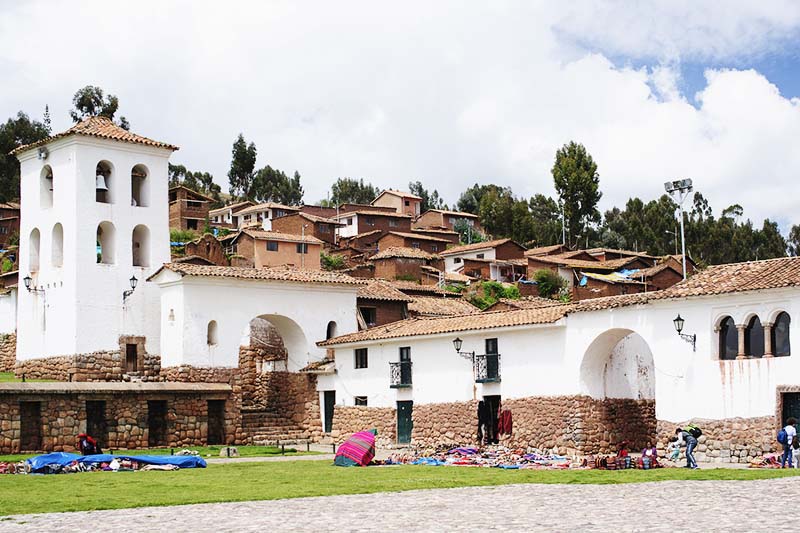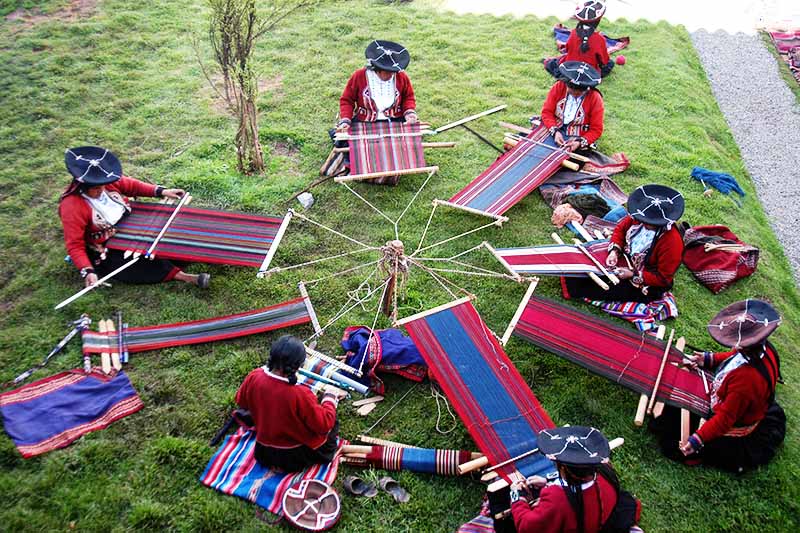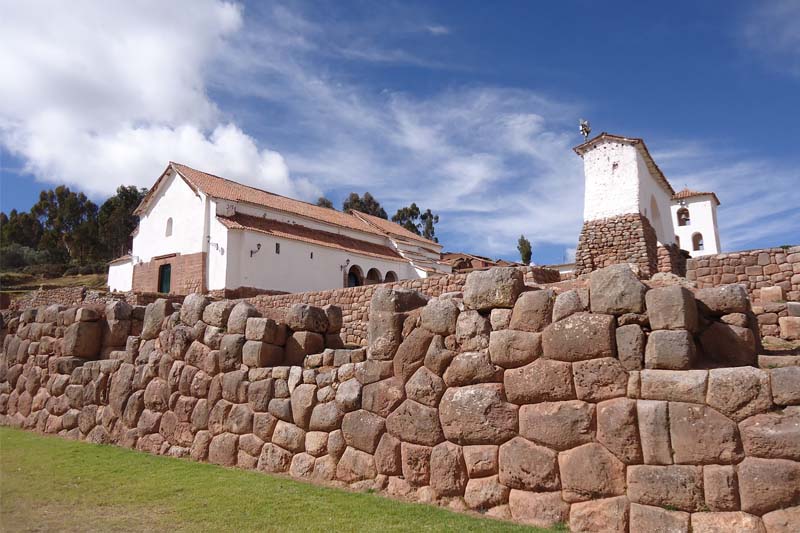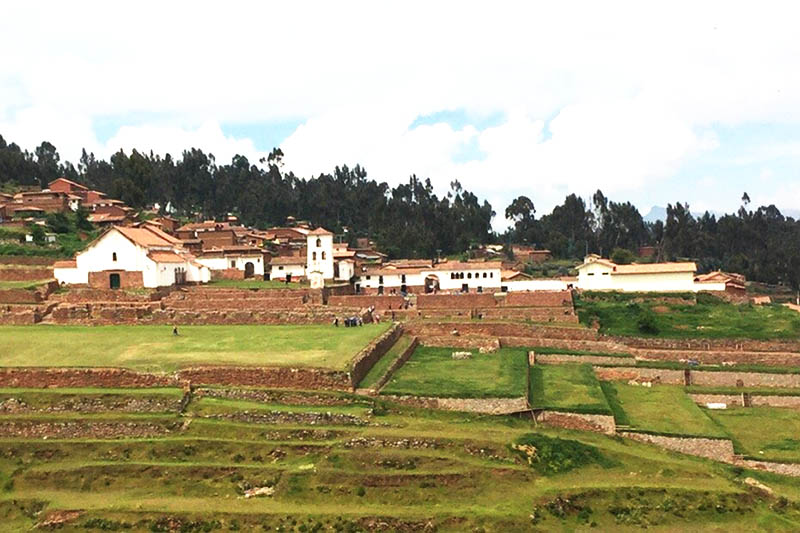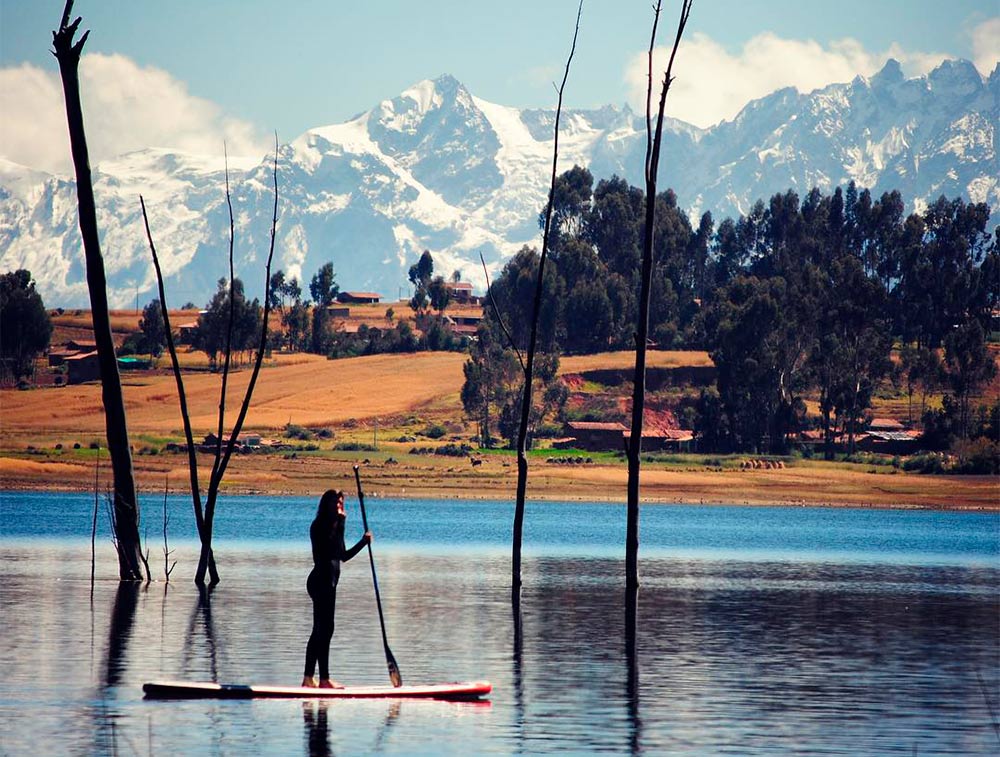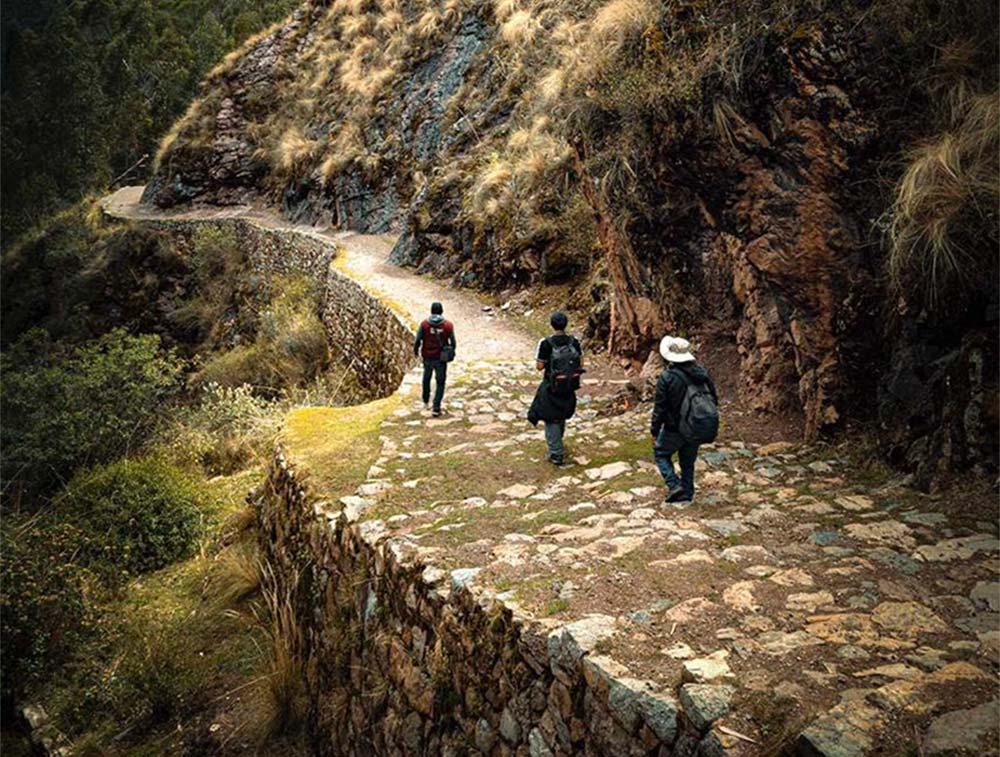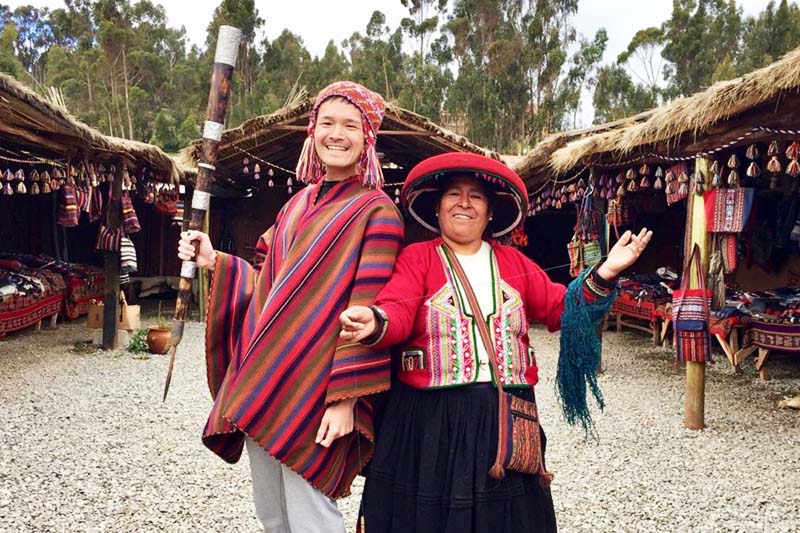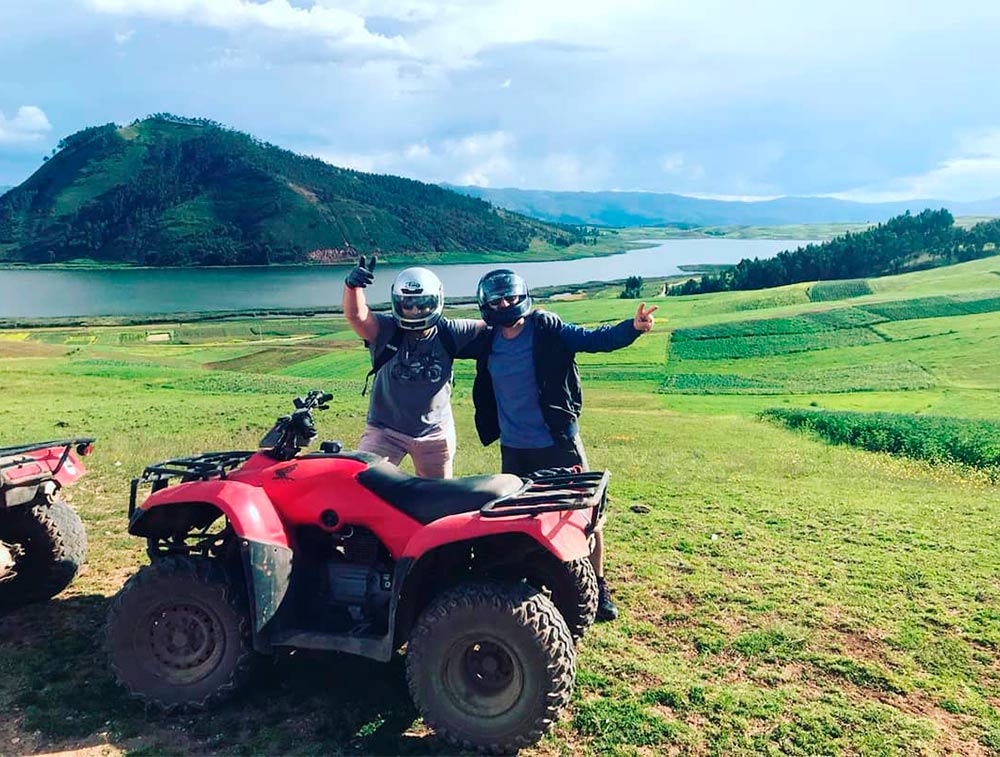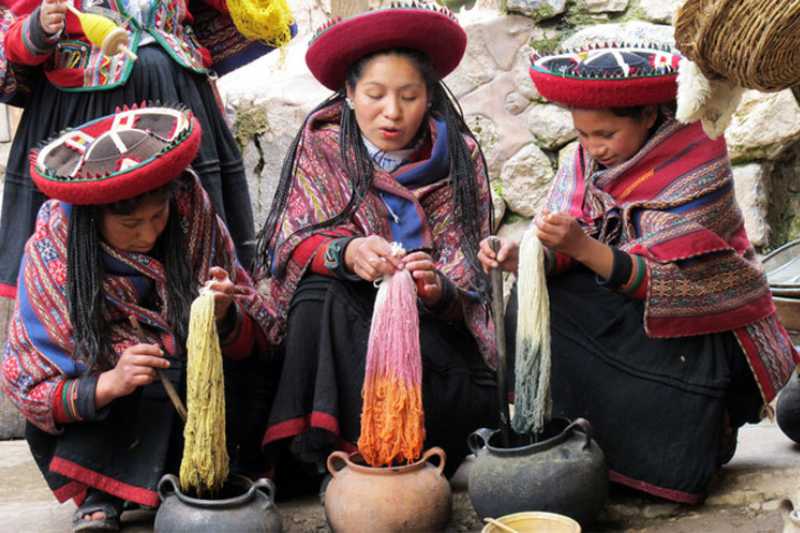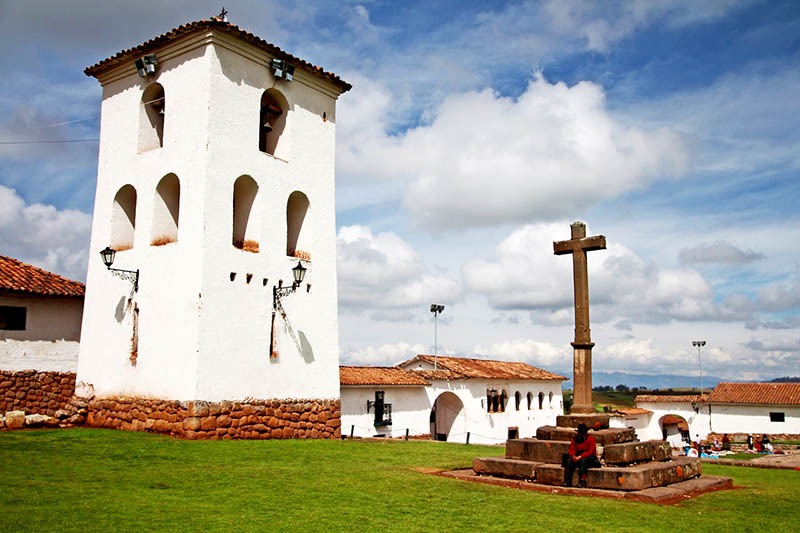Travel Guide: Chinchero
The ancestral town of Chinchero is one of the most beautiful in the Sacred Valley of the Incas. A wonderful place where you can still feel and see the Inca culture as it was in times past. It has an incomparable plaza located on what was an Inca palace, with a typical Sunday fair where ancient marketing practices are still carried out and where you can see people wearing the typical clothing of their ancestors.
- What is Chinchero? What to see?
- Travel guide in Chinchero: hotels, restaurants
- Frequently asked questions about visiting Chinchero
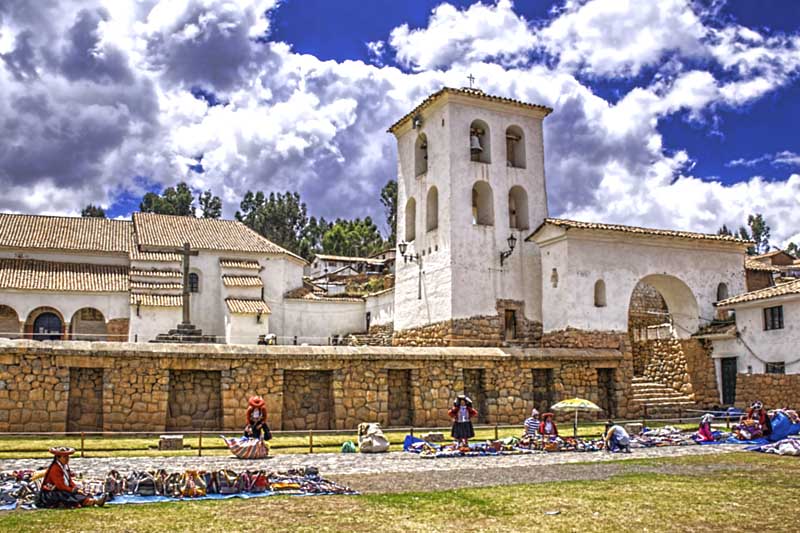
View of the main square of the town of Chinchero
How to get to the town of Chinchero from Cusco?
The town of Chinchero is located in the Sacred Valley of the Incas, about 30 kilometers by road from the city of Cusco. The best way to go is with private tourist transportation, although you can also go with public transportation. The buses leave from Pavitos Street, in the Historic Center of Cusco. The trip costs 5 Peruvian soles and takes approximately 45 minutes. Departures are every 20 minutes from 5 in the morning to 5 in the afternoon on average.
What is Chinchero? What to see?
Video: This is the Inca site of Chinchero
Chinchero, the rainbow town
- Chinchero is recognized as the ‘rainbow town’ because during the rainy season (especially in January, February or March) it is possible to observe this natural phenomenon very easily in this town.
- It is located 28 kilometers from the city of Cusco, in the province of Urubamba, at 3,780 meters above sea level. The town is flanked by large snow-capped mountains such as Salkantay, Verónica and Soray, and the Huaypo and Piuray lagoons.
- Chinchero is the most typical and picturesque town in the Sacred Valley of the Incas, it brings together twelve Andean indigenous communities that are still governed by the Inca organization system called “Ayllu”.
- Its population is dedicated to the cultivation of native species and livestock, although today tourism drives a large part of the local economy. A town that fights to keep its ancient tradition alive.
The palace of Túpac Yupanqui
- In Chinchero, its spectacular main square stands out in a very notable way, an extraordinary fusion between Inca architecture and colonial architecture, which makes Chinchero a unique place.
- Next to the square stands the remains of what was the palace of Inca Túpac Yupanqui, a large Inca wall with 10 trapezoidal niches that is preserved to this day, showing how beautiful the palace must have been.
- In addition, in the square and its surroundings there are Inca buildings and terraces that show the original Inca urban layout.
- The chronicles say that in 1540 AD Manco Inca ordered Chinchero to be burned while fleeing from the Spanish conquerors, so that they would run out of supplies.
The church of Chinchero
- On the remains of the Túpac Yupanqui palace is the Chinchero church.
- It was built around 1572 by Viceroy Toledo and completed in 1607, calling it the Church of Our Lady of Monserrat.
- This church is one of the best examples of Cusco religious art, it was built on Inca walls, with an altar decorated in baroque style gold leaf and on whose walls you can see original works by indigenous artists Diego Quispe Tito ( the highest representative of the Cusco school) and Francisco Chihuantito.
The archaeological site of Chinchero
- In Chinchero the Incas built an impressive network of Inca platforms and roads that surrounded the palace of Túpac Yupanqui.
- Research at the archaeological site indicates that the place was populated before the Incas by the Killke culture, which took full advantage of the fertile lands of the place.
- The archaeological site covers an area of up to 43 hectares where you can see platforms, terraces, stone enclosures, Inca roads, stone banks, water channels and temples.
- During the war between the Incas and the Spanish in the mid-16th century, Manco Inca’s army burned Chinchero, its platforms and enclosures, to prevent the Spanish from getting supplies during the Inca flight towards Vilcabamba.
- Today the archaeological site of Chinchero is the main tourist attraction of the place. The entrance is included in the Cusco Tourist Ticket (cost of 70 Peruvian soles) which also offers entry to Pisac, Ollantaytambo and Moray.
Textile centers
- Chinchero is characterized by the living culture that it still maintains despite the strong incursion of the modern world on traditions.
- On Sundays, a fair is held in the main square of Chinchero, where you will see local products, crafts and, above all, textiles sold. There it is still possible to obtain products through barter, just as the Incas did.
- Chinchero textiles are manufactured in the ancestral style. That is, the weaving and dyeing are done using natural products, without modern artifacts.
- If you wish, you can see in the textile centers how the women dressed in their beautiful costumes carry out the process of spinning and dyeing the wool with natural dyes, and appreciate the way they weave following the ancient tradition.
- In the town there are dozens of textile centers that show visitors this ancestral way of making their clothing. In each location there is a sale of products made from alpaca and baby alpaca.
The Piuray and Huaypo lagoons
- Chinchero is surrounded by two large and beautiful lagoons: Piuray and Huaypo. These are separated from each other by 18 kilometers. Since Inca times, these have been a natural water source for the city of Cusco and various towns in the Sacred Valley of the Incas.
- Around the lagoons you can see a mountainous landscape where the snow-capped Soray, Verónica and ‘Apu’ Salkantay stand out.
- Likewise, in these lagoons you can practice adventure sports such as kayaking and stand up paddle. To do this you must contact the tourism agency of your choice.
- There is a famous legend about these lagoons. It says that the first Inca ruler Manco Cápac received the order from his father, the sun god, who, along with his children, would accompany him to his death, the sunset. The Inca did it like this. However, before reaching their destination, the children became gaps: the boy who was ahead became Huaypo and the girl who was delayed became Piuray.
Adventure sports in Chinchero
- The mountain-filled geography of Chinchero is ideal for practicing various adventure sports such as: paragliding cycling, hiking and ATV routes.
- The ATV adventure is highly preferred by young people who visit the Sacred Valley of the Incas. This begins in Chinchero, crossing its fields and mountain landscapes until visiting the Salineras de Maras and the circular terraces of Moray.
- Paragliding takes place on Cerro Sacro, in the upper part of Chinchero. There the winds are conducive to flying over with incredible views of the entire Sacred Valley. To carry out this adventure you can contact any tourism agency in Cusco.
- Although cycling and hiking can be done on your own, it is best to go with a tourism agency that offers 100% security.
More activities you should know about
- In Chinchero you can also take a short hiking route along the historic Inca trails, the qhapac ñan. This is the Inca route to the town of Urquillos in the warm lands of the Sacred Valley of the Incas. The route is 9 kilometers and free for everyone.
- In Chinchero you can also enjoy the delicious Cusco cuisine. In the town market, especially at the Sunday fair, typical dishes such as fried guinea pig, fried trout or chicharrón are sold. A good idea is to accompany these dishes with a glass of chicha, a fermented corn drink widely consumed by the Incas.
Travel guide in Chinchero: hotels, restaurants, prices
Entrance price to Chinchero
- The visit to Chinchero can be done with a tour to the Sacred Valley of the Incas (entrance included) or on your own by purchasing the ticket at the entrance gate of the archaeological site.
- Entry to Chinchero is with the Cusco Tourist Ticket. The cost is 70 soles for foreign tourists and 40 soles for Peruvian tourists. The ticket also allows entry to the archaeological sites of Moray, Ollantaytambo and Pisac.
Tour price to Chinchero
- The 1-day Sacred Valley of the Incas tour includes a visit to Chinchero, as well as the archaeological sites of Ollantaytambo and Pisac. This service includes pick-up from the hotel, tourist transportation, entrance to all tourist attractions, professional tour guide and buffet lunch in the town of Urubamba.
- The 1-day tour to the Sacred Valley of the Incas costs between $50 and $80 depending on the tourism agency you choose.
Visit schedule to Chinchero
- The archaeological site of Chinchero is open to the public from Monday to Sunday from 8 in the morning to 5 in the afternoon.
Frequently asked questions about visiting Chinchero
1) Where is Chinchero? How to get there from the city of Cusco?
Chinchero is in the Sacred Valley of the Incas, 30 kilometers from the city of Cusco. You can get there from Cusco by taking a taxi or public transportation. The buses leave from Pavitos Street.
2) How high is Chinchero?
Chinchero is 3,762 meters above sea level.
3) How much does it cost to visit Chinchero?
The entrance to Chinchero costs 70 soles for foreigners and 40 soles for Peruvians. This ‘Cusco Tourist Ticket’ ticket also allows you to visit the archaeological sites of Moray, Pisac and Ollantaytambo.
4) What to see or do in Chinchero?
In the town of Chinchero there are various tourist attractions and interesting activities. Highlights include a visit to the archaeological site of Chinchero, its colonial church, textile center, Huaypo lagoon and Piuray lagoon. In this lagoon you can practice kayaking or ATV routes. In Chinchero you can also take the route on foot from Chinchero to Urquillos.
5) What is the history of Chinchero?
Chinchero, due to its proximity to the city of Cusco, was an important agricultural center, palace and town in the Inca era. Emperor Túpac Yupanqui (1441 – 1493 AD) had a palace built there. In the 16th century, Chinchero was burned during the wars between the Spanish and the rebellious Incas of Vilcabamba. Today Chinchero is one of the most important tourist sites in Cusco and the Sacred Valley of the Incas.
6) When is the best time to visit Chinchero?
Chinchero can be visited throughout the year. The best time to do it is in the dry season, that is, from May to October. The rainiest months are January, February and March. Rains can make walking through the archaeological site uncomfortable. If you visit Chinchero in the rain it is necessary to wear a rain poncho.
7) What are the visiting hours of the archaeological site of Chinchero?
The archaeological site of Chinchero is open to visitors from Monday to Sunday from 8 in the morning to 5 in the afternoon.
8) How much does a tour to Chinchero cost?
Most tourists decide to visit Chinchero as part of a 1-day tour to the Sacred Valley of the Incas. The tour also includes a visit to the archaeological sites of Pisac and Ollantaytambo. They offer: pick up from the hotel, complete tourist transportation, professional guide, entrance fees and a buffet lunch in the town of Urubamba. The price of the tour varies from 50 to 80 dollars, depending on the tourism agency you choose.
9) What is the weather like in the town of Chinchero?
The town of Chinchero has a cold-temperate climate typical of the high altitude region (it is 3,762 meters above sea level). The days can reach maximum temperatures of 22ºC. During the nights the temperature can drop to less than 0ºC. Rains are more frequent from November to April (especially in January, February and March). The rest of the year is the dry season (with little rain).
10) What restaurants and hotels are recommended in Chinchero?
Chinchero has 3-star hotels, however, there are still no services of great diversity and quality. Some recommendations are: Chinchero Boutique Hotel and La Casa de Barro Lodge & Restaurant. Both are 3 stars. In addition, there are 2-star services. The restaurants are not of tourist quality so it is recommended to have lunch in the town of Urubamba (located 30 kilometers from Chinchero).
Advice from people who have been there
 By: Thiago E.
By: Thiago E.“Chinchero is a trip to the past“
“I visited Chinchero on my vacation with my family and I loved everything, its landscapes, the typical costumes of the people, the textile centers and of course its archaeological site, which is large and with the company of a guide you learn a lot about the Incas . “I highly recommend visiting the town.“
By Ticket Machu Picchu – Last updated, August 15, 2024
